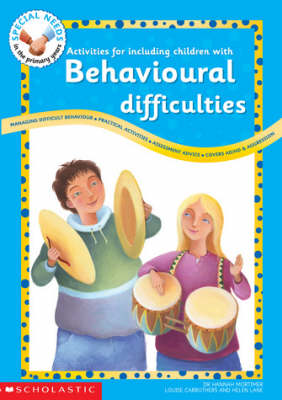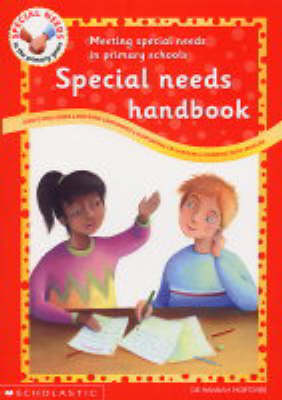Special Needs in the Primary Years S.
2 total works
Activities for Including Children with Behavioural Difficulties
by Hannah Mortimer, Helen Lane, and Louise Carruthers
Published 17 September 2004
Following the success of "Special Needs in the Early Years", "Special Needs in the Primary Years" supports the professional SENCO, the head teacher who's trying to keep on the right side of the Special Needs Code and the class teacher who is trying to do the best for all her children. The series provides information on specific problems, guidance on the appropriate procedures to follow and activity ideas to support particular difficulties.This book is packed full with all the advice you need to support children with behavioral difficulties in your class. You will find information on managing and assessing different types of behavioral problems including AD/HD, bullying and aggression. Alongside the practical help there are easy-to-use activity ideas to develop the children's skills across the curriculum. The activity ideas cover those subject areas that will be most problematic for children with behavioral difficulties, such as speaking and listening. A step-by-step format shows you how you can focus on specific behavior targets while also teaching a range of different subjects.
The chapters in this book cover: understanding behavioral difficulties; assessing children with behavioral difficulties; planning interventions; and, activities focusing on Speaking and listening, Writing, Design and technology, Art and design, Music, PE.
The chapters in this book cover: understanding behavioral difficulties; assessing children with behavioral difficulties; planning interventions; and, activities focusing on Speaking and listening, Writing, Design and technology, Art and design, Music, PE.
Following the success of Special Needs in the Early Years, Special Needs in the Primary Years supports the professional SENCO, the headteacher who's trying to keep on the right side of the Special Needs Code and the class teacher who is trying to do the best for all her children. The series provides information on specific problems, guidance on the appropriate procedures to follow and activity ideas to support particular difficulties. The SPECIAL NEEDS HANDBOOK gives primary teachers and SENCOs a wealth of information on special needs issues together with practical suggestions to help them fulfil their roles effectively. There is straightforward advice on how to assess special needs and how to implement the legal requirements of the Code of Practice. Guidance is given on how to create individual education plans and how to work with and support the children, other staff and parents. A useful selection of photocopiable resources is also provided. The chapters in this book focus on: Inclusion Assessing Special Educational Needs School Action School Action Plus Differentiation Making sure the children feel involved Working with parents Working with other agencies.

